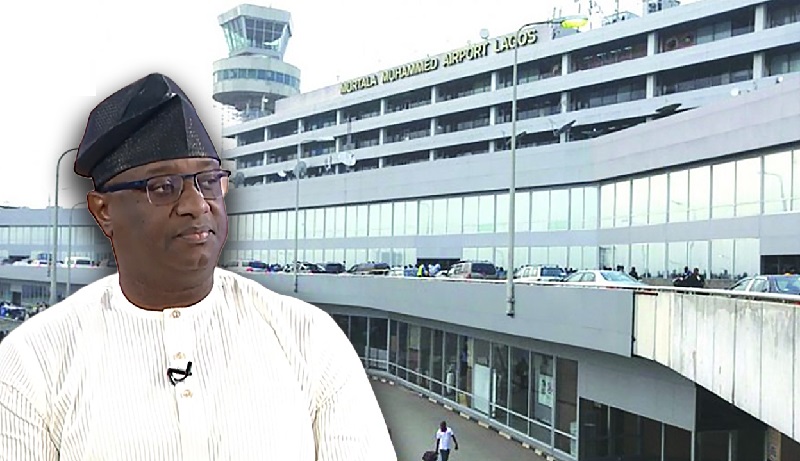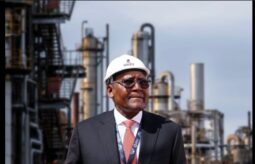The recent approval of N712 billion (approximately $445 million USD at an exchange rate of N1,600 to $1) for the comprehensive rehabilitation, upgrade, and modernization of Terminal One at Murtala Muhammed International Airport (MMIA) in Lagos has sparked heated debate in Nigeria. Critics, including opposition parties and some aviation experts, have labeled the cost as extravagant, questioning its justification amid economic challenges. However, a closer examination of the project’s scope and comparisons with similar airport renovations worldwide reveal that the N712 billion investment is not only reasonable but, in fact, modest when measured against global standards. This article explores why the MMIA renovation is a cost-effective endeavor, delivering significant value for Nigeria’s aviation sector and its economic aspirations.
The Scope of the Lagos Airport Renovation
The N712 billion project, approved by the Federal Executive Council (FEC) on July 31, 2025, is a comprehensive overhaul of MMIA’s International Terminal One, the nation’s busiest airport and a critical gateway to West Africa. The project, awarded to the China Civil Engineering Construction Corporation (CCECC), involves stripping the terminal down to its structural core and rebuilding it with modern mechanical, electrical, and plumbing systems. It also includes expanding Terminal Two, constructing a new apron, access roads, bridges, and a N49.9 billion perimeter fencing project equipped with advanced security features like intrusion detection systems, CCTV cameras, and solar-powered floodlights. Additional upgrades include airfield lighting enhancements to Category Two (CAT 2) standards and the reconstruction of over 82,000 square meters of apron areas to improve aircraft parking and traffic management. The total cost of all Lagos-related airport works amounts to N712.26 billion, to be executed over 22 months without foreign or local loans, funded entirely through the Renewed Hope Infrastructure Development Fund.
This ambitious scope is not merely a cosmetic upgrade but a transformative effort to modernize an aging facility that has been plagued by decades of neglect and patchwork repairs. MMIA, designed to handle 14 million passengers annually, processed only 6.5 million in 2024, indicating inefficiencies due to outdated infrastructure and capacity constraints. The renovation aims to align the airport with global standards, enhance passenger experience, improve safety, and position Lagos as West Africa’s aviation hub.
Global Comparisons: A Modest Investment
When compared to airport renovation and construction projects worldwide, the N712 billion ($445 million) price tag for MMIA is remarkably cost-effective. Below are some notable examples that highlight this:
John F. Kennedy International Airport (JFK), New York, USA
The ongoing renovation of JFK, one of the world’s premier airports, is budgeted at a staggering $19 billion. This project involves modernizing terminals, expanding capacity, and upgrading infrastructure to handle increased passenger traffic. While JFK is a larger airport, the scale of its investment—over 40 times the cost of the MMIA project—underscores the relatively modest cost of Lagos’ renovation.
Addis Ababa Bole International Airport, Ethiopia
The expansion of Addis Ababa’s airport, a key hub in Africa, cost $7.8 billion. This project included constructing a new terminal and upgrading existing facilities to accommodate growing traffic. The MMIA renovation, at less than 6% of this cost, achieves similar goals of modernization and capacity expansion on a smaller but still significant scale.
Cape Town International Airport, South Africa
South Africa’s Cape Town airport underwent a major upgrade at a cost of $1.2 billion. This project focused on terminal expansions and infrastructure improvements. The MMIA project, at roughly one-third of this cost, delivers comparable upgrades, including terminal reconstruction and advanced security systems.
Phnom Penh International Airport, Cambodia
Cambodia’s Phnom Penh airport expansion was completed for $1.5 billion, involving new terminal construction and capacity enhancements. The MMIA project, at less than one-third of this cost, tackles a full terminal rebuild and additional infrastructure upgrades, making it a cost-efficient endeavor.
Otay Mesa Metropolitan Airpark, USA
The Otay Mesa project in San Diego, costing $1 billion, involves building aviation and non-aviation facilities on 134 hectares, creating 4,000 permanent jobs and generating $500 million in annual revenue. While this is a new construction, the MMIA renovation, at less than half the cost, modernizes an existing facility with similar economic potential, given Lagos’ status as Nigeria’s economic nerve center.
These comparisons demonstrate that the MMIA renovation is far from the “most expensive in the world,” as some critics have claimed. In fact, at $445 million, it is significantly cheaper than many global projects, even those involving new construction rather than rehabilitation.
Economic Justification and Long-Term Benefits
The MMIA renovation is a strategic investment with substantial economic returns. Minister of Aviation Festus Keyamo has emphasized that Lagos airport generates approximately N200 billion annually, meaning the N712 billion investment could be recouped within three years. This rapid return on investment is driven by MMIA’s role as Nigeria’s primary aviation hub, handling the majority of international passenger traffic and supporting events like “Detty December,” which boosts tourism. A modernized airport will enhance Nigeria’s global image, attract more visitors, and stimulate economic activity in Lagos, the nation’s commercial capital.
Moreover, the project addresses critical safety and operational issues. The new perimeter fencing and security systems will mitigate runway incursions and wildlife hazards, which have caused near-misses in the past. Upgrading airfield lighting to CAT 2 standards will improve landing capabilities during low-visibility conditions, reducing delays and enhancing safety. These improvements are essential for maintaining MMIA’s competitiveness in a region where airports like Accra and Addis Ababa are vying for hub status.
Addressing Criticisms
Critics, including the African Democratic Congress (ADC) and Labour Party, have labeled the project as fiscally reckless, arguing that the funds could be better spent on education, healthcare, or rural electrification. They also question the lack of National Assembly approval and cite a 2014 Chinese loan that built four new airports (Abuja, Lagos, Kano, and Port Harcourt) for $500 million. However, these arguments overlook key points. First, the 2014 loan was for new terminal construction, not a comprehensive rebuild of an existing facility, and its costs were spread across four airports. Second, the MMIA project is funded without loans, reducing financial strain. Third, while transparency concerns are valid, the FEC’s approval and Keyamo’s detailed public statements indicate a commitment to accountability.
Furthermore, comparisons to the 2014 loan fail to account for inflation, currency devaluation (from N360 to N1,600 per dollar), and the expanded scope of the current project, which includes security enhancements and infrastructure beyond the terminal itself. The claim that MMIA is “functional and serviceable” ignores its outdated systems and inability to handle projected traffic growth, which could choke Nigeria’s aviation sector if unaddressed.
The Case for Concessioning: A Missed Opportunity?
Some experts, like Capt. Samuel Caulcrick and Chris Aligbe, argue that the government should have opted for a Public-Private Partnership (PPP) or concession arrangement to reduce costs. They cite the successful construction of MMIA’s Terminal Two by Bi-Courtney Aviation Services Limited (BASL) and a 2018 bid by a foreign company to concession MMIA for $30 billion over 30 years. While PPPs can attract private capital, they often involve long-term revenue-sharing agreements that may not align with Nigeria’s immediate need to control its key aviation asset. Keyamo has emphasized that the government’s direct investment ensures transparency and avoids the pitfalls of past concession deals that stalled under previous administrations.
Conclusion
The N712 billion renovation of Murtala Muhammed International Airport is a strategic and cost-effective investment when viewed in a global context. Compared to projects like JFK ($19 billion), Addis Ababa ($7.8 billion), and even smaller-scale upgrades in South Africa and Cambodia, the MMIA project is a bargain at $445 million. Its comprehensive scope—terminal reconstruction, security enhancements, and operational upgrades—addresses decades of neglect while positioning Lagos as West Africa’s aviation hub. With an expected return on investment within three years and no reliance on loans, the project is both fiscally prudent and economically transformative. Rather than a “misplaced priority,” the MMIA renovation is a bold step toward modernizing Nigeria’s aviation infrastructure, boosting tourism, and enhancing national pride. Nigerians should view this investment as a long-overdue upgrade to a critical national asset, one that will deliver lasting benefits for generations to come.







